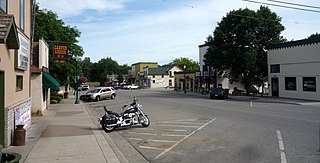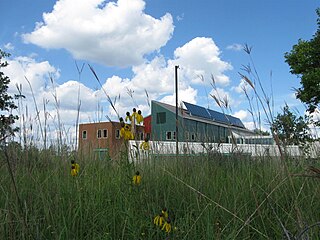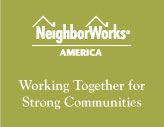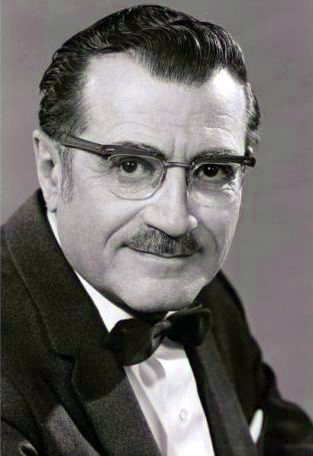
Carver County is a county in the U.S. state of Minnesota. The county is mostly farmland and wilderness with many unincorporated townships. As of the 2020 census, the population was 106,922. Its county seat is Chaska. Carver County is named for explorer Jonathan Carver, who in 1766–67, traveled from Boston to the Minnesota River and wintered among the Sioux near the site of New Ulm. Carver County is part of the Minneapolis-St. Paul-Bloomington, MN-WI Metropolitan Statistical Area.

Carver is a small city in Carver County, Minnesota, United States along the banks of the Minnesota River. The city is named after early explorer Jonathan Carver. The downtown area is home to the Carver Historic District, a nationally recognized collection of historically significant local buildings.

Chaska is a city and the county seat of Carver County, Minnesota, United States. The population was 27,810 at the 2020 census. An outer ring suburb of the Twin Cities, Chaska is home to the Hazeltine National Golf Club and is known for its historic downtown area located on a bend of the Minnesota River. The City of Chaska merged with Chaska Township in 2006. The city still has some remaining agricultural land.
Chaska Township was a township in Carver County, Minnesota, United States. The population was 154 at the 2000 census.

Apple Valley is a city in northwestern Dakota County in the State of Minnesota, and a suburb of the Twin Cities. The population was 56,374 at the 2020 census, making it the 17th most populous city in Minnesota. In 2014, Money.com named Apple Valley the 17th best place to live in the United States, up from 20th in 2010, 24th in 2008 and 28th in 2007. And it also the host for Scott Highlands Middle School a national blue ribbon school placed in the city of Apple Valley, Minnesota.

Chanhassen is a city about 16 miles southwest of Minneapolis in Carver County and partially in Hennepin County, Minnesota, United States. The southwest edge of the Minneapolis–Saint Paul suburbs, there is a mix of residential neighborhoods and rural landscapes. The population was 25,947 at the 2020 census.
A homeowner association, or a homeowner community, is a private association-like entity in the United States, Canada, The Philippines and certain other countries often formed either ipso jure in a building with multiple owner-occupancies, or by a real estate developer for the purpose of marketing, managing, and selling homes and lots in a residential subdivision. The developer will typically transfer control of the association to the homeowners after selling a predetermined number of lots.

Whittier is a neighborhood within the Powderhorn community in the U.S. city of Minneapolis, Minnesota, bounded by Franklin Avenue on the north, Interstate 35W on the east, Lake Street on the south, and Lyndale Avenue on the west. It is known for its many diverse restaurants, coffee shops and Asian markets, especially along Nicollet Avenue. The neighborhood is home to the Minneapolis Institute of Art, the Minneapolis College of Art and Design, and the Children's Theatre Company.
Minnesota's 6th congressional district includes most or all of Benton, Carver, Sherburne, Stearns, Wright, and Anoka counties. Many of the Twin Cities' outer northern and western suburbs are included within the boundaries of this district, such as Blaine, Andover, Chaska, Ramsey, St. Michael-Albertville, Elk River, Chanhassen, Otsego, Lino Lakes, Buffalo, Ham Lake, Monticello, Waconia, Big Lake, East Bethel, and Victoria. The St. Cloud Area is the other major center of population for the district, including the cities of St. Cloud, Sartell, Sauk Rapids and Waite Park.

The Minnesota Valley National Wildlife Refuge is a 14,000-acre (5,666 ha) National Wildlife Refuge in eastern and central Minnesota. Located just south of the city of Minneapolis, it is one of fourteen Regional Priority Urban Wildlife Refuges in the nation. Many parts of the Refuge are near large establishments of the Twin Cities; the Bloomington Education and Visitor Center and two trailheads are located just blocks from the Mall of America, the Wilkie Unit is just east of Valleyfair and the Louisville Swamp Unit is just south of Minnesota Renaissance Festival.

SouthWest Transit is a public transportation agency that is based in Eden Prairie, Minnesota. The agency was formed in 1986 when the southwest Minneapolis suburbs of Chaska, Chanhassen, and Eden Prairie chose to opt out of the Metropolitan Transit Commission transit system in accordance with Minnesota State Statutes. Under a joint powers agreement between the three cities, they created their own transit system, SouthWest Metro Transit. In 2022, the system had a ridership of 371,300, or about 1,300 per weekday as of the third quarter of 2023.
The Urban Growth and New Community Development Act is a statute enacted by the United States Congress in 1970.

The Minnesota Renaissance Festival is a Renaissance fair, an interactive outdoor event which focuses on recreating the look and feel of a fictional 16th Century "England-like" fantasy kingdom. It operates during seven consecutive weekends, from mid-August until the final week in September on a site near the Minnesota River in Shakopee, a suburb of the Twin Cities.

U.S. Highway 212 (US 212) within the state of Minnesota travels from the South Dakota state line in the west, crosses the southwestern part of the state, to the Minneapolis–Saint Paul metropolitan area in the east and end at its interchange with US 169 and State Highway 62 (MN 62) in the Minneapolis suburb of Edina. US 212 in Minnesota has an official length of 161.8 miles (260.4 km). It is an urban freeway within the Minneapolis–Saint Paul area and is mostly a two-lane rural road elsewhere in the state.

Joseph R. Hoppe is an American politician and former member of the Minnesota House of Representatives. A member of the Republican Party of Minnesota, he represented District 47B, which included portions of Carver County in the southwestern part of the Twin Cities metropolitan area. Before becoming a politician, Hoppe worked as a local businessman and in communications.
KleinBank was a Minnesota-based bank owned by Old National Bank. KleinBank was headquartered in Chaska, Minnesota, which operated 21 bank branches. KleinBank was the largest family-owned state bank in Minnesota with assets over $1.9 billion.

The Neighborhood Reinvestment Corporation, doing business as NeighborWorks America, is a congressionally chartered nonprofit organization that supports community development in the United States and Puerto Rico. The organization provides grants and technical assistance to more than 240 community development organizations. NeighborWorks America provides training for housing and community development professionals through its national training institutes. Since 2007, NeighborWorks America has administered the Congressionally created National Foreclosure Mitigation Counseling Program.

The Housing and Urban Development Act of 1968, Pub. L.Tooltip Public Law 90–448, 82 Stat. 476, enacted August 1, 1968, was passed during the Lyndon B. Johnson Administration. The act came on the heels of major riots across cities throughout the U.S. in 1967, the assassination of Civil Rights Leader Martin Luther King Jr. in April 1968, and the publication of the report of the Kerner Commission, which recommended major expansions in public funding and support of urban areas. President Lyndon B. Johnson referred to the legislation as one of the most significant laws ever passed in the U.S., due to its scale and ambition. The act's declared intention was constructing or rehabilitating 26 million housing units, 6 million of these for low- and moderate-income families, over the next 10 years.

Samuel A. Gitterman (1911–1998) was a Canadian architect and urban planner, who served as the first Chief Architect and Planner of the Canada Mortgage and Housing Corporation. Over his career, Gitterman was responsible for designing low-income public housing, private single-family detached homes, and major suburban subdivisions across Canada. Gitterman also played a central role in early Canadian housing research and the development of urban planning as a stand-alone academic discipline.
















